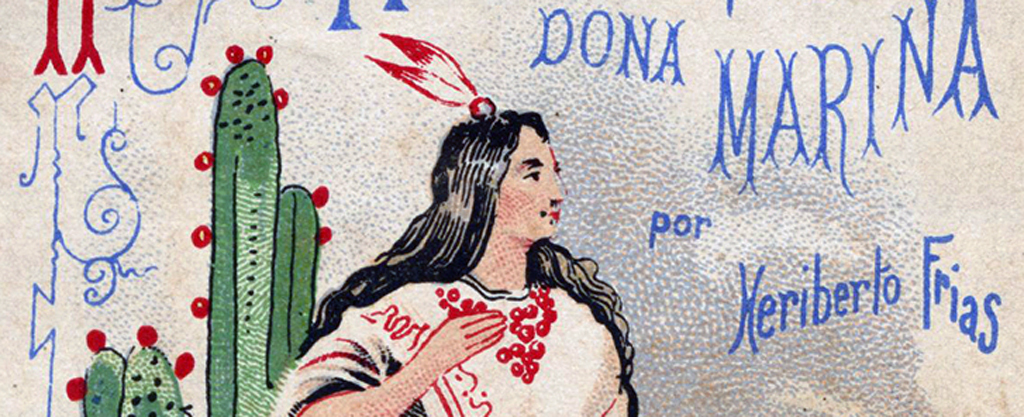
Description
In this lesson, students will analyze images to compare the role of indigenous women in Mesoamerica before and after the Spanish colonization. They will consider how Malintzin, a Nahua woman from Coatzacoalcos, contributed to this process and how women resisted or adapted to the changes introduced by the Spaniards. This is Lesson 2 of the Women in Colonial Latin America unit.
Date Range: 1500-1530
Grade Levels: 9-12
Countries: Mexico
Course Subject(s): Indigenous Studies; Latin American Studies; Women & Gender Studies; World History Studies
Topic(s): Colonialism; Indigenous Resistance; Gender; Malintzin (Malinche); Hernán Cortes; Aztec Empire
Teaching Time Frame: 1 day (90 minute lesson)
Guiding Questions
- How did Mesoamerican indigenous women address/confront the Spanish colonization?
- What was the importance of language and translation in the colonization of the Aztec empire?
- How did women adapt to the changes imposed by the Spaniards? How did they resist them?
Learning Objectives
- State the main characteristics of the life of Indigenous women before the Spanish colonization.
- Explain the changes introduced by the Spaniards in the lives of Indigenous women.
- Discuss the importance of language in the process of colonization through the figure of Malintzin.
- Create their own codex showing how Indigenous women faced the Spanish colonization using color, images and Nahuatl ideograms to portray their understandings.
- Evaluate the fairness of Malintzin’s contemporary representation.
Relevant Teaching Standards
TEKS Guidelines
- World History
- (c)-(6)-(A) – The student understands the characteristics and impact of the Maya, Inca, and Aztec civilizations. The student is expected to compare the major political, economic, social, and cultural developments of the Maya, Inca, and Aztec civilizations and explain how prior civilizations influenced their development.
- (c)-(6)-(B) – Explain how the Inca and Aztec empires were impacted by European exploration/colonization.
C3 Framework
- Geography
- D2.Geo.6.9-12. Evaluate the impact of human settlement activities on the environmental and cultural characteristics of specific places and regions.
- History
- D2.His.1.9-12. Evaluate how historical events and developments were shaped by unique circumstances of time and place as well as broader historical contexts.
- D2.His.14.9-12. Analyze multiple and complex causes and effects of events in the past.
- D2.His.10.9-12. Detect possible limitations in various kinds of historical evidence and differing secondary interpretations.
- D2.His.11.9-12. Critique the usefulness of historical sources for a specific historical inquiry based on their maker, date, place of origin, intended audience, and purpose.
Downloads
Lesson Plan (PDF) | Primary Sources & Editable Plan (ZIP)
Rights Statement
Creator(s): Cinthia S. Salinas, Department Chair, Department of Curriculum and Instruction & Maria Jose Ramirez, Graduate Student, Department of Curriculum and Instruction
Date: 2020-05
This assignment is under a Creative Commons Attribution-NonCommercial-ShareAlike 4.0 International Public License (“Public License”). This license lets others share, remix, tweak, and build upon the work non-commercially, as long as they credit the creators and license their new creations under the identical terms.
